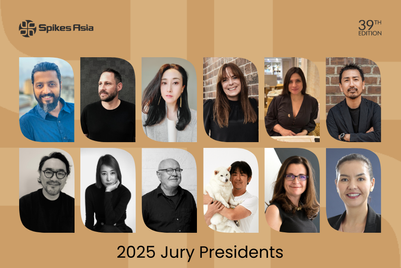
Spikes Asia 2017 is done and dusted, and while past years drew attention to spam ads and plagiarism, this year’s judging process appears to have improved by leaps and bounds.
For starters, gender representation received a major boost, with at least four female jury presidents leading key categories. Second, there was zero bad press about the entries, a refreshing change for any creative award festival, as many will attest to.
But that doesn’t mean it was completely free of human prejudice and minor errors. Considering this, here are three reasons why a robot (AI) might be a viable option for next year’s judging panel (watch out jurors; bots are coming for your jobs):
It’s unbiased: The fact remains that technology itself is blind to race, religion and origins. As robots can also be 'genderless,' it solves the gender-bias issue, along with any qualms with regard to Western over-representation and predisposed prejudices. It’s not going to award an ad or campaign simply because it addressed an issue close to the AI’s heart, or because its 'friend' made the ad.
It never sleeps: Or eats. Or drinks. In short, hiring a robot would cost less in terms of labour, and the costs of having to feed and entertain it. An average meal in Singapore is likely set you back SG$50 or SG$60—and that’s not including alcohol. Multiply that by the number of days and judges to feed, it really does add up. And that’s just steak.
It remembers all the data it needs: As the digital space sees huge growth with the introduction of categories such as Innovation, Mobile and Digital Craft, being able to automatically take facts and figures into account is a big plus. Sure, all of us might remember that heartfelt viral campaign some agency in Thailand came up with, or the funny one that Japan did, and the one from Australia too. But do we remember the actual numbers and reach? Or even the titles? The answer to that—unless you’re among the 2 percent with eidetic memory—is no. A robot, however, will.
Where AI fails
Spikes Asia is a celebration of the best and brightest in human creativity. While AI comes across as a more viable and cost-effective option to judging, it does have its limitations. For example, take the list of questions entrants need to answer for submission under the Creative Effectiveness Spikes:
- What were the objectives for the creative work?
- What was the strategy behind the creative work?
- What was the creative work?
- What effect did it have in the market?
- Explain if there were any other factors that may have impacted on the effectiveness of your campaign
- What was the commercial gain for your client as result of running the creative work?
- What do you think this case adds to our understanding of how creativity can be effective?
How do you build an algorithm which takes into account the thought process and objective behind a creative piece? If it is based on speech patterns and how often a certain word appears, then the biggest argument AI has over humans—unbiased judgment—is null and void. Let’s not forget the lessons we learned from Microsoft’s infamous fiasco with its AI bot Tay last year. It was made very clear that people can have a field day with “teaching” machines how to be jerks using just Twitter. So gaming a bit for judging, and therefore creating a bias, is not so far-fetched.
Being invited to judge the entries at Spikes Asia is quite a professional honour for a creative. Plus, with great “power” comes great responsibility. What many don’t see behind the glitz and glamour are jurors sifting through tens of thousands of entries to find that needle in the haystack: the iconic piece of work that might define the future of the industry for years to come.
Can a robot do that? At the moment no, but it may help the jurors cut that time in half with data. The stage we’re in with AI is not one where we talk about robots overtaking the humans, a complete division between us and them, a hostile takeover. Rather, it is the stage where we start to recognise that human intelligence, compassion and creativity are a necessary companion to AI. This is AI with EQ.
Dave Sanderson is CEO of Nugit.



.jpg&h=334&w=500&q=100&v=20250320&c=1)

+(900+x+600+px)+(3).png&h=334&w=500&q=100&v=20250320&c=1)




.jpg&h=334&w=500&q=100&v=20250320&c=1)

+(900+x+600+px)+(3).jpg&h=268&w=401&q=100&v=20250320&c=1)
.png&h=268&w=401&q=100&v=20250320&c=1)



.jpg&h=268&w=401&q=100&v=20250320&c=1)

